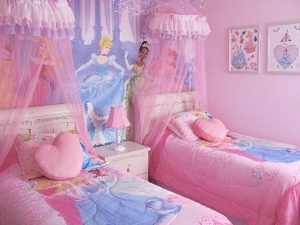Consumer culture plays a large role in the construction of identity, especially for young children who are in a liminal state, striving to better understand themselves and their peers. Children’s preferences for toys and products is a result of larger socialization, which is perpetuated by young children watching movies, especially Disney princess movies. Consumption of Disney products specifically is a way for viewers to engage with other fans. Sociologists Juliet Schor and Sut Jhally provide insight regarding American consumptive practices in “The New Politics of Consumption: Why Americans Want So Much More Than They Need” and “Image-Based Culture: Advertising and Popular Culture,” respectively, that corroborate these notions. Jhally and Schor believe the modern world is dominated by consumer culture, which relies on institutions that define the “good life” and self-validation through material items (Jhally 247). Similarly, Sociologist Douglas Kellner asserts, “Media stories provide the symbols, myths and resources through which we constitute a common culture and through the appropriation of which we insert ourselves into this culture” (Kellner 9). This relates to the Disney Princess franchise, as the myriad of products allow young children to self-identify through the consumption of Disney products.
The Disney Princess franchise was created in 2001 by Andy Mooney in order to increase product sales; from 2001 to 2006, the product sales increased from $300 million to three billion dollars. By 2009, the franchise made $4 billion in sales. Currently, the line has 26,000 different products – from bedding, coloring books, dolls, DVDs, to trinkets galore.

This is an example of the ways that Disney Princess products make their way into a young girl’s bedroom – princess bedding, canopy, and wall mural.
Andy first created the “princess” line after checking out a “Disney on Ice”, and being surrounded by young girls who had made their own princess costumes. Disney had never before marketed its characters separately from a film’s release, and Roy Disney considered it “heresy” to group princess characters from different stores – that is why when the princesses appear on the same item, they do not make eye contact, as they each stare off into a different direction as if unaware of one another; the ways in which the princesses are presented reflects notions that princesses should avoid female bonding, and they should solely focus on getting saved by a prince, getting married, and being taken care of by their husbands. Cinderella, Sleeping Beauty, Ariel and Belle are the most popular princesses, whereas Snow White and Jasmine are less popular. Mulan and Pocahontas are considered Disney Princesses, but are not often found in stores. Pocahontas’s eagle feathers do not have much marketing potential, and Mulan’s kimono, the dress that makes her miserable in the movie, is what she is marketed in, rather than her warrior gear.

As you can see, the princesses are all looking off into different directions…perhaps searching for their princes.
Caroline Wolfe